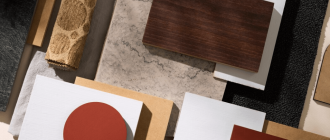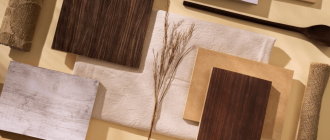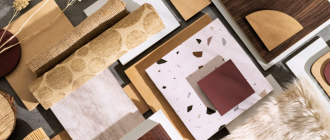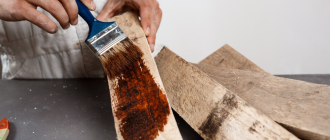Choosing the Right Hardwood Floor Thickness for Your Needs and Preferences
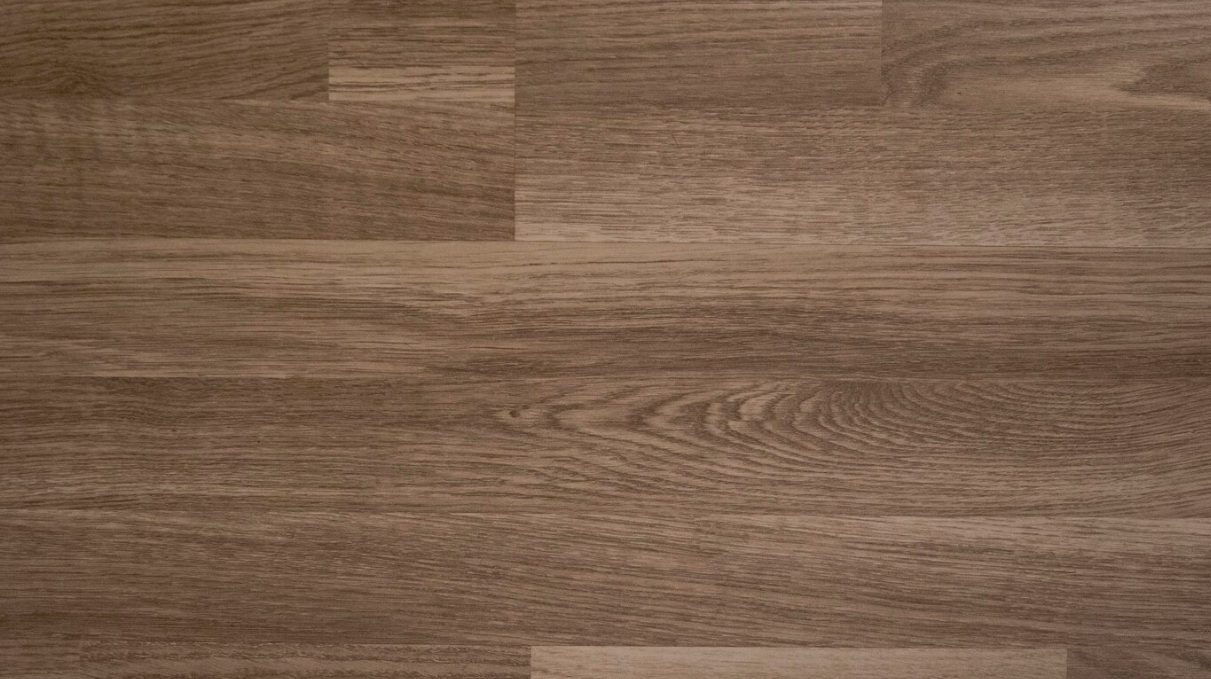
When it comes to choosing the perfect hardwood floor, there are many factors to consider. One important consideration is the thickness of the hardwood planks. The thickness of the planks can have a significant impact on the overall appearance, durability, and lifespan of your hardwood flooring. So, how do you choose the perfect hardwood floor thickness for your home? This guide will help you navigate through the options and make an informed decision.
First and foremost, it’s important to understand that the thickness of hardwood floors typically ranges from 1/4 inch to 3/4 inch. Thinner planks, such as those that are 1/4 inch thick, are often referred to as “engineered hardwood,” while thicker planks are known as “solid hardwood.” There are pros and cons to both options, so it’s essential to weigh them carefully.
If you’re looking for maximum durability and longevity, solid hardwood is generally the way to go. Solid hardwood floors are made from a single piece of wood and can be sanded and refinished multiple times. This means that even if the surface gets scratched or worn over time, you can easily restore its original beauty. Additionally, solid hardwood is less prone to warping or creaking, making it ideal for high-traffic areas or rooms with fluctuating humidity levels.
On the other hand, engineered hardwood is a more cost-effective option that offers greater stability and versatility. Engineered hardwood consists of several layers of wood, with a top layer made of real hardwood and lower layers made from plywood or high-density fiberboard (HDF). The added layers make engineered hardwood more resistant to moisture and temperature fluctuations, making it suitable for areas like basements or kitchens where traditional hardwood may not be suitable. Plus, the top layer of real hardwood gives the flooring a genuine look and feel.
Ultimately, the choice of hardwood floor thickness depends on your specific needs and preferences. If you prioritize durability and the ability to refinish your floors, solid hardwood may be the better option. However, if you’re looking for a more budget-friendly and versatile flooring solution, engineered hardwood is worth considering. By taking into account factors such as the location of the flooring, foot traffic, and your overall aesthetic goals, you can select the perfect hardwood floor thickness that suits your home and lifestyle.
Why Hardwood Flooring Matters
Hardwood flooring is more than just a beautiful addition to your home; it’s an investment that can significantly impact the value and overall aesthetic appeal of your space. There are several reasons why hardwood flooring matters:
- Durability: Hardwood floors are known for their durability and can withstand heavy foot traffic, making them suitable for both residential and commercial spaces. With proper care and maintenance, hardwood floors can last for decades.
- Timeless Beauty: Hardwood floors never go out of style. Their natural elegance and timeless beauty can enhance any interior design, from traditional to modern. Moreover, hardwood floors have a warmth and character that cannot be replicated by other materials.
- Health Benefits: Unlike carpets, hardwood floors do not trap dust, pollen, or other allergens, making them an excellent choice for individuals with allergies or respiratory issues. Hardwood floors are also easier to clean and maintain, further promoting a healthier indoor environment.
- Increased Home Value: Investing in hardwood flooring can significantly increase the value of your home. Potential buyers are often willing to pay a premium for homes with hardwood floors due to their durability, aesthetics, and long-term cost savings.
- Versatility: Hardwood flooring is available in a wide range of species, colors, and finishes, allowing you to choose the perfect style to complement your existing decor. Whether you prefer a rustic oak or a sleek maple, there is a hardwood floor that can suit your personal taste and design preferences.
- Sustainability: Hardwood flooring is a natural, renewable resource that can be responsibly sourced. Many manufacturers ensure their products come from sustainably managed forests, making hardwood floors an environmentally friendly choice for your home.
Considering these factors, it’s clear why hardwood flooring matters. Whether you’re building a new home or renovating an existing one, investing in hardwood floors can provide numerous benefits that will enhance the quality and value of your living space for years to come.
Choosing the Right Thickness
When choosing hardwood flooring, one important factor to consider is the thickness of the planks. The thickness of the flooring will not only affect its overall appearance but also its durability and lifespan. Here are some factors to keep in mind when selecting the right thickness for your hardwood floor.
1. Subfloor
The type and condition of your subfloor can play a role in determining the appropriate thickness of the hardwood flooring. If you have a concrete subfloor, a thicker plank might be necessary to help minimize potential unevenness or moisture issues. On the other hand, if you have a plywood subfloor, a thinner plank may be suitable.
2. Usage
Consider how the room where you plan to install the hardwood flooring will be used. High-traffic areas, such as hallways and living rooms, may require a thicker plank to withstand the constant wear and tear. On the other hand, low-traffic areas like bedrooms may be suitable for thinner planks.
Additionally, if you have pets or children, it’s important to consider their activities. Scratches and dents can occur more easily with thinner planks, so a thicker option may be more suitable in these situations.
3. Sturdiness
The thickness of the hardwood planks can impact their sturdiness and resistance to warping or damage. Thicker planks are generally more resistant to moisture and temperature changes, making them a good choice for areas with high humidity levels or fluctuating temperatures, such as bathrooms or kitchens.
Thicker planks can also provide a more solid and substantial feel underfoot, which some homeowners prefer. However, keep in mind that thicker planks may also be more expensive than thinner ones.
Overall, choosing the right thickness for your hardwood floor requires careful consideration of factors such as subfloor type, usage, and desired sturdiness. By evaluating these factors, you can select the perfect thickness that will not only complement your space but also provide long-lasting beauty and durability to your hardwood flooring.
Key Considerations
When it comes to selecting the perfect hardwood floor thickness for your home, there are a few important factors to consider:
| Factor | Description |
|---|---|
| Subfloor Condition | The condition of your subfloor can play a significant role in determining the appropriate hardwood floor thickness. If your subfloor is uneven or prone to moisture, a thicker plank may be necessary to ensure a stable and durable installation. |
| Foot Traffic | The amount of foot traffic your hardwood floor will experience is another crucial consideration. High-traffic areas, such as entryways, hallways, and living rooms, may benefit from a thicker floor that can withstand heavy use and resist wear and tear over time. |
| Aesthetics | The desired aesthetic appearance of your hardwood floor should also be taken into account. Thicker planks tend to create a more substantial and luxurious look, while thinner planks can provide a sleek and modern feel. Consider the overall style and design of your space when deciding on the appropriate thickness. |
| Installation Method | The way in which your hardwood floor will be installed is another factor to consider. Different installation methods require different thicknesses of hardwood planks. For example, if you are planning to glue your floor down, a thinner plank may be suitable. However, if you are using a nail or staple installation method, a thicker plank may be necessary for stability. |
| Budget | Your budget will also play a role in determining the thickness of your hardwood floor. Thicker planks are generally more expensive than thinner ones. Take into consideration both the upfront cost of the material and the long-term maintenance and durability when deciding on a budget-friendly option. |
By considering these key factors, you can make a well-informed decision on the perfect hardwood floor thickness that meets both your aesthetic preferences and practical needs.
Traditional vs Engineered Hardwood
When it comes to choosing the perfect hardwood flooring for your home, two popular options are traditional hardwood and engineered hardwood. Both types offer their own unique benefits and drawbacks, so it’s important to understand the differences between them before making a final decision.
Traditional hardwood flooring is made from solid wood planks that are typically 3/4 inch thick. These planks are cut from a single piece of timber and can be sanded and refinished multiple times throughout their lifespan. Traditional hardwood is known for its timeless beauty and durability, and it can add value to your home.
On the other hand, engineered hardwood is made from a thin veneer of real wood bonded to multiple layers of plywood or high-density fiberboard (HDF). This construction makes engineered hardwood more stable and resistant to moisture compared to traditional hardwood. It also allows for installation on all levels of a home, including basements and bathrooms.
One of the main advantages of engineered hardwood is its versatility. It can be installed as a floating floor, where the planks are not glued or nailed down, or as a glued-down floor. This makes engineered hardwood a great choice for DIY homeowners or those looking for a quick and easy installation process.
Another consideration when choosing between traditional and engineered hardwood is cost. Traditional hardwood tends to be more expensive, especially if you choose exotic wood species. Engineered hardwood, on the other hand, is often more affordable and can provide a similar aesthetic to traditional hardwood at a lower price point.
Finally, it’s important to consider maintenance and durability. While traditional hardwood can be sanded and refinished numerous times, engineered hardwood typically has a thinner wear layer that can only be refinished a limited number of times. However, both types of hardwood are susceptible to scratches and dents, so it’s important to take proper care of your floors to ensure they last for years to come.
In conclusion, both traditional hardwood and engineered hardwood offer their own set of advantages and disadvantages. Consider factors such as installation, cost, maintenance, and durability when selecting the perfect hardwood flooring for your home.
Understanding the Benefits
Choosing the right hardwood floor thickness is an important decision when it comes to flooring options for your home. There are several benefits to consider when deciding on the thickness of your hardwood floor.
1. Durability
A thicker hardwood floor is generally more durable than a thinner one. With a greater thickness, the floor is less likely to dent or scratch easily, making it suitable for high-traffic areas or homes with pets and children. It can withstand heavy furniture and everyday wear and tear better, and it is less likely to require frequent repairs or replacements.
2. Stability
Thicker hardwood floors tend to be more stable because they have a lower tendency to expand and contract with changes in humidity and temperature. This stability reduces the chances of gaps forming between the floorboards or the floor warping over time. It also helps to minimize squeaking noises that can occur with thinner floors.
3. Sound Insulation
A thicker hardwood floor can provide better sound insulation compared to a thinner one. The extra thickness helps to reduce noise transmission between floors, making it ideal for multi-story buildings or homes with high ceilings. It creates a more peaceful and quiet environment by absorbing and minimizing the impact of footsteps, furniture movement, and other sounds.
4. Lifespan
A thicker hardwood floor generally has a longer lifespan compared to a thinner one. With proper care and maintenance, a thicker floor can last for decades without losing its beauty or functionality. It can be sanded and refinished multiple times over its lifespan, allowing for refreshing its appearance whenever desired. This longevity makes it a worthwhile investment in the long run.
Overall, understanding the benefits of choosing the right hardwood floor thickness can help you make an informed decision that suits your specific needs and preferences. Whether you prioritize durability, stability, sound insulation, or a longer lifespan, selecting the appropriate thickness can enhance the beauty and functionality of your home for years to come.
Determining Your Lifestyle Needs
When choosing the thickness of your hardwood floor, it is important to consider your lifestyle and the type of activity that will be taking place on the floor. Different activities and levels of foot traffic can impact the durability and longevity of your floor. Here are some factors to consider when determining your lifestyle needs:
High Foot Traffic: If you have a busy household with kids, pets, or frequently entertain guests, it is important to choose a hardwood floor with a thick wear layer. A thick wear layer will protect your floor from scratches, dents, and wear caused by high foot traffic. Look for hardwood floors with a wear layer thickness of at least 4mm to ensure long-lasting durability.
Pets: If you have pets, especially larger dogs with long nails, it is essential to choose a hardwood floor that can withstand their activity. Look for hardwood floors with a high Janka hardness rating, as these are more resistant to scratches and dents caused by pet nails. Additionally, consider a hardwood floor with a thicker wear layer to provide extra protection against pet-related wear and tear.
Moisture and Humidity: If you live in a humid or moisture-prone area, it is crucial to select a hardwood floor that can handle these conditions. Engineered hardwood floors are ideal for areas with high humidity or moisture levels, as they are more resistant to warping and expansion than solid hardwood floors. Additionally, consider a thicker hardwood floor as it provides better moisture resistance.
Subfloor Type: The type of subfloor you have can also impact the thickness of your hardwood floor. If you have a concrete subfloor, it is recommended to choose a thicker hardwood floor to provide more stability and insulation. Additionally, a thicker floor can help reduce sound transmission between floors in multi-level homes.
Design Preferences: Lastly, consider your design preferences when selecting the thickness of your hardwood floor. Thicker hardwood floors tend to have a more luxurious and substantial look, while thinner floors can provide a sleek and modern aesthetic. Choose a thickness that aligns with your overall design vision for your space.
By taking your lifestyle needs into account, you can select the perfect hardwood floor thickness that will withstand your specific activities and provide beauty and durability for years to come.
Installing the Perfect Hardwood Floor
Installing a hardwood floor is a significant investment, but when done correctly, it can transform the look and feel of your home. To ensure a successful installation and a beautiful finished product, it’s important to follow the proper steps and techniques. Here is a step-by-step guide to help you install the perfect hardwood floor:
- Prepare the subfloor: Before installing hardwood flooring, it’s crucial to properly prepare the subfloor. This includes removing any existing flooring, cleaning the surface, and repairing any damage. The subfloor should be smooth, level, and free of debris.
- Acclimate the hardwood: Hardwood flooring needs time to acclimate to the humidity and temperature of the room where it will be installed. Remove the planks from their packaging and place them in the room for at least 48 hours before installation. This will allow the wood to adjust and prevent warping or buckling after installation.
- Install the underlayment: Depending on the type of hardwood flooring you choose, an underlayment may be necessary. This layer helps reduce noise, provides insulation, and can act as a moisture barrier. Follow the manufacturer’s instructions to install the underlayment properly.
- Start the installation: Begin the installation process by placing the first row of hardwood planks along the longest wall in the room. Use spacers to maintain a consistent expansion gap between the planks and the walls. Nail or staple the planks to the subfloor, making sure they are securely fastened.
- Continue the installation: Work your way across the room, adding rows of hardwood planks. Stagger the seams between planks to create an aesthetically pleasing pattern and ensure structural integrity. Use a flooring nailer or stapler to secure the planks, and periodically check for levelness.
- Trim and finish: Once you’ve installed the majority of the hardwood flooring, you may need to trim the boards to fit against walls or in corners. Use a miter saw or a coping saw for precise cuts. After all the planks are in place, sand and finish the floor according to your preferences.
Remember to read the manufacturer’s instructions and follow recommended installation techniques specific to your hardwood flooring product. It’s also a good idea to consult a professional if you’re unsure about any steps of the installation process. With proper preparation and care, you can achieve the perfect hardwood floor that will enhance the beauty and value of your home for years to come.
Choosing the Most Suitable Wood Species
When it comes to selecting a hardwood floor, the choice of wood species plays a crucial role in determining the overall look and feel of your space. Each species possesses unique characteristics that can greatly impact the aesthetics, durability, and maintenance requirements of your floor. Here are some popular wood species to consider:
- Oak: Oak is one of the most widely used wood species for hardwood flooring. It is known for its durability and classic beauty. Oak floors have a medium to coarse grain pattern and come in a variety of colors, from light brown to reddish-brown.
- Maple: Maple is another popular choice, known for its light color and smooth grain. It has a uniform appearance and tends to have a more contemporary and clean look. Maple floors are highly durable and resistant to scratches and dents.
- Cherry: Cherry wood is prized for its rich, reddish tones that darken over time. It has a fine grain pattern and a smooth texture. Cherry floors add warmth and elegance to any space but require more maintenance to preserve their beauty.
- Walnut: Walnut is a luxurious wood species with a dark, rich brown color and a straight grain pattern. It has a smooth texture and adds a touch of sophistication to any room. Walnut floors are softer than oak or maple, making them more prone to scratches and dents.
- Hickory: Hickory is a popular choice for homeowners who desire a rustic or country-style look. It has a distinctive grain pattern and ranges in color from light tan to medium brown. Hickory floors are highly durable and can withstand heavy foot traffic.
Ultimately, the choice of wood species comes down to personal preference and the desired style of your space. Consider factors such as durability, color, grain pattern, and maintenance requirements when making your selection. Don’t be afraid to consult with a flooring professional to ensure you choose the most suitable wood species for your needs.
Exploring Different Grain Patterns
When it comes to selecting the perfect hardwood floor, one of the factors to consider is the grain pattern. The grain pattern refers to the way the wood fibers are arranged and can greatly impact the overall appearance and character of the floor.
There are three main grain patterns that you can choose from: plain sawn, quarter sawn, and rift sawn.
Plain Sawn: This is the most common grain pattern and is characterized by a linear, repetitive pattern with a mix of straight and curved lines. It showcases the natural beauty and variety of the wood grain.
Quarter Sawn: In this grain pattern, the wood is cut at a 90-degree angle to the growth rings, resulting in a straight and uniform appearance. It features prominent ray flecks that add depth and visual interest to the floor.
Rift Sawn: Rift sawn wood is cut at a 30 to 60-degree angle to the growth rings, producing a straight grain pattern with minimal figuring. This pattern is known for its stability and durability.
Each grain pattern has its own unique characteristics and can create a different look and feel in your space. It’s important to consider your personal style and the overall aesthetic you want to achieve when choosing a grain pattern for your hardwood floor.
Remember, the grain pattern is just one aspect of selecting the perfect hardwood floor. You should also consider factors like wood species, finish, and thickness to ensure you choose a floor that suits your needs and preferences.
Considering Your Home’s Architectural Style
When choosing the perfect hardwood floor thickness for your home, it’s important to consider the architectural style of your house. Different architectural styles have different design elements and characteristics that can influence the choice of hardwood floor thickness.
If you have a modern or contemporary style home, you may want to consider a thinner hardwood floor thickness. These styles often feature clean lines and minimalistic designs. A thinner hardwood floor can complement the sleek and streamlined look of these homes.
On the other hand, if you have a traditional or classic style home, a thicker hardwood floor may be more suitable. These styles often have more ornate and detailed design elements. A thicker hardwood floor can add a sense of grandeur and elegance to these homes.
For homes with an industrial or rustic style, a medium thickness hardwood floor may be the best choice. These styles often incorporate raw and natural materials, and a medium thickness hardwood floor can complement this aesthetic.
Additionally, it’s important to consider the overall color palette and texture of your home when selecting the hardwood floor thickness. Lighter colors and smoother textures may work well with a thinner hardwood floor, while darker colors and more textured finishes may benefit from a thicker hardwood floor.
Ultimately, the choice of hardwood floor thickness should be based on a combination of the architectural style of your home, your personal preferences, and the desired aesthetic. By considering these factors, you can select the perfect hardwood floor thickness that enhances the overall design and feel of your home.
Matching Your Interior Décor
When choosing the perfect hardwood floor thickness for your home, it’s important to consider how well it will match your interior décor. The thickness of the floor can greatly impact the overall look and feel of a room.
If you have a modern, minimalistic interior design, you may want to consider opting for a thinner hardwood floor. Thin hardwood floors can create a sleek and seamless appearance that complements a contemporary style. Additionally, thin floors can give the illusion of more space in smaller rooms.
For those with a more traditional or rustic interior design, a thicker hardwood floor may be the better choice. Thicker floors can add a sense of sturdiness and authenticity to a room, enhancing the warm and cozy feel of a traditional interior. They can also better withstand heavy foot traffic and provide more insulation.
It’s important to also consider the color and finish of the hardwood floor when matching it to your interior décor. Lighter colored floors can make a space feel bigger and more airy, while darker colored floors can create a sense of richness and elegance. The finish of the floor, whether it be glossy or matte, can also impact its overall appearance.
- For a light and airy interior, consider pairing a thin, light-colored hardwood floor with minimalistic furniture and neutral tones.
- If you have a traditional or rustic interior, opt for a thicker, darker colored floor with antique or vintage furniture.
- For a more eclectic interior, you can mix and match different hardwood floor thicknesses and colors to create a unique and visually appealing space.
Ultimately, the perfect hardwood floor thickness for your home is a personal choice that depends on your individual style and preferences. By considering how well the floor matches your interior décor, you can ensure that your hardwood floor becomes an integral part of your home’s overall aesthetic.
Keeping Durability in Mind
When selecting the perfect hardwood floor thickness, it is essential to keep durability in mind. The thickness of the hardwood flooring can play a significant role in determining how long the floor will last and how well it can withstand everyday wear and tear.
A thicker hardwood floor will generally be more durable and have a longer lifespan compared to thinner options. Thicker floors are less likely to develop cracks, scratches, or dents over time. They can handle heavy foot traffic, furniture, and accidental impacts without showing visible signs of wear.
In addition to thickness, the type and quality of the hardwood also affect durability. Hardwoods such as oak, maple, and hickory are known for their durability and are excellent options for high-traffic areas. They can withstand the daily rigors of a busy household and maintain their beautiful appearance for years to come.
It is important to consider your lifestyle and the level of foot traffic in your home when selecting the hardwood floor thickness. If you have pets, children, or anticipate a lot of activity in your home, opting for a thicker hardwood floor is advisable. This will ensure that your floor can withstand the demands of your lifestyle and maintain its beauty and functionality for a long time.
Furthermore, thicker hardwood floors provide better insulation and soundproofing compared to thinner options. They can help reduce noise transmission between floors and provide superior acoustic benefits, making them an excellent choice for apartments or multi-story houses.
In summary, when choosing the perfect hardwood floor thickness, prioritize durability. Opting for a thicker hardwood floor, particularly one made from durable hardwoods, will provide a longer lifespan, better resistance to wear and tear, and improved insulation and soundproofing. Consider your lifestyle and the level of foot traffic in your home to make an informed decision that will last for years to come.
Budgeting for Your Hardwood Flooring Project
When it comes to installing hardwood flooring in your home, it’s important to plan your budget in advance. This will help you determine how much you can afford to spend on materials and installation, and ensure that you stay within your financial means. Here are some factors to consider when budgeting for your hardwood flooring project:
1. Size of the Area
The size of the area you need to cover with hardwood flooring will have a significant impact on your budget. Larger areas will require more materials, which can increase the overall cost of the project. Measure the length and width of the room where you plan to install hardwood flooring to get an accurate estimate of how much material you will need.
2. Type of Hardwood
There are many different types of hardwood flooring available, and the type you choose will also affect your budget. Some types of hardwood, such as oak or walnut, tend to be more expensive than others. Consider your personal preferences and budgetary constraints when selecting the type of hardwood for your project.
3. Installation Costs
In addition to the cost of the materials, you will also need to budget for the installation of the hardwood flooring. Hiring a professional installer can be more expensive than doing it yourself, but it can ensure that the job is done correctly. Get quotes from different installers to compare prices and find one that fits your budget.
4. Additional Expenses
It’s important to factor in any additional expenses that may arise during your hardwood flooring project. This could include costs for removing old flooring, purchasing underlayment or adhesive, and any necessary repairs to the subfloor. Make a list of all potential expenses and add them to your budget to avoid any surprises along the way.
By considering these factors and creating a detailed budget for your hardwood flooring project, you can ensure that you make an informed decision and stay within your financial limits. Remember to leave some room for unexpected expenses and consider the long-term value and durability of the hardwood flooring you choose.
Maintaining and Caring for Your Hardwood Floors
Hardwood floors are not only a beautiful addition to any home, but they can also increase the value of your property. However, in order to keep your hardwood floors looking their best, regular maintenance and care is required. Here are some tips to help you maintain the beauty of your hardwood floors:
| Cleaning | Prevention | Protection |
|---|---|---|
| – Sweep or vacuum your hardwood floors regularly to remove dirt and debris that can cause scratches.- Use a damp mop with a mild cleaning solution specifically designed for hardwood floors to remove any stains or spills.- Avoid using excessive water or harsh cleaning chemicals that can damage the wood. | – Place mats or rugs at the entrances of your home to trap dirt and moisture.- Use felt pads on the legs of furniture to prevent scratching when moving or rearranging.- Trim your pets’ nails regularly to prevent them from scratching the floor surface. | – Use area rugs in high-traffic areas to prevent wear and tear on the wood.- Avoid dragging heavy furniture across the floor, as it can leave marks and indentations.- Protect your floor from direct sunlight to prevent discoloration by using curtains or blinds. |
In addition to these maintenance tips, it is important to keep in mind the type of hardwood floor you have and the specific care instructions provided by the manufacturer. Different types of hardwood may require slightly different cleaning products or techniques. It is always best to follow the guidelines provided to ensure the longevity and beauty of your hardwood floors.
By following these care and maintenance tips, you can keep your hardwood floors looking beautiful for years to come. Regular cleaning, prevention of scratches and damage, and protecting your floors from sunlight are all key factors in maintaining the beauty and value of your hardwood floors.

